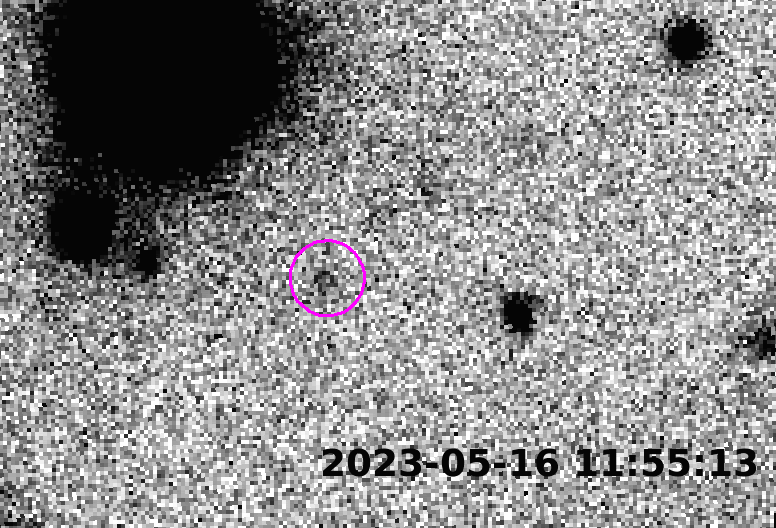The Subaru telescope located at the Mauna Kea Observatory on Hawai’i has found a new world within our Solar System, dubbed “Ammonite” by the team who found it.
In 2003, NASA-funded researchers spotted what was then the most distant object discovered in our Solar System. The dwarf planet, named Sedna after the Inuit goddess of the sea, was found over 12.9 billion kilometers (8 billion miles) from Earth, potentially making it an inner object of the hypothetical “Oort cloud” surrounding our Solar System.
“Sedna is distinguished among other objects mentioned above by its highly elongated orbit and a much greater aphelion radius,” a 2021 paper on the topic explains, adding that the surface composition also shows similarities with Kuiper Belt objects.
“The discoverers have supposed that Sedna was created in the Solar System at the early stage of its evolution, and its orbit was changed because of dynamic effects that followed the Sun’s formation within a dense stellar cluster. According to other versions, Sedna’s orbit was changed by a stellar encounter (e.g., the passing Scholz’s star about 70 thousand years ago at a distance of 52 thousand au from the Sun), or Sedna was captured from a low-mass star or a brown dwarf in interstellar space.”
The planetoid was the first of the “sednoids” to be discovered; trans-Neptunian objects with highly-eccentric orbits. Their orbits are actually pretty unusual, and there are quite a few hypotheses about how they ended up where they are, ranging from galactic tides to the influence of an (as yet hypothetical) Planet 9.
Thanks to the new discovery, we may be a little closer to an answer.
“In recent years, spacecrafts have been sent to various small bodies in the Solar System for close observation and sample collection. However, these spacecrafts have only explored limited regions of the Solar System,” Dr Fumi Yoshida, leader of the Formation of the Outer Solar System: An Icy Legacy (FOSSIL) project, said in a statement. “Most of the vast Solar System remains unexplored. Wide-field observations with the Subaru Telescope are steadily pushing back the frontier.”

Ammonite, captured over several hours.
Image credit: NAOJ, ASIAA
In March, May, and August 2023 the telescope spotted a potential object on the outskirts of our Solar System. Follow-up observations in July 2024 using the Canada-France-Hawaii Telescope confirmed the object – officially named 2023 KQ14 – and its orbit, confirming it as the fourth Sednoid discovered. Further searches of archives showed that the object had been spotted in 2021 and 2014, as well as by the Kitt Peak National Observatory in 2005, allowing the team to narrow down the accuracy of Ammonite’s orbit.
Observations of Ammonite suggest it is between 220 and 380 kilometers (137 and 236 miles) in diameter. Modeling the sednoid’s orbit, the team found its perihelion – its closest approach to the Sun – is between 50 and 75 astronomical units (AU), with one AU being the distance between the Earth and the Sun. Its aphelion – the furthest point from the Sun – it is around 252 AU out from the center.
Simulating the orbit of Ammonite into the past, the team found that it has been stable for at least 4.5 billion years. Looking at the other sednoids, the team found that Ammonite’s orbit was remarkably similar, until around 4.2 billion years ago, possibly when an unknown “clustering event” influenced their trajectories, 300 million years after the Solar System was formed.
“Ammonite was found in a region far away where Neptune’s gravity has little influence. The presence of objects with elongated orbits and large perihelion distances in this area implies that something extraordinary occurred during the ancient era when Ammonite formed,” Yoshida added.
“Understanding the orbital evolution and physical properties of these unique, distant objects is crucial for comprehending the full history of the Solar System. At present, the Subaru Telescope is among the few telescopes on Earth capable of making such discoveries. I would be happy if the FOSSIL team could make many more discoveries like this one and help draw a complete picture of the history of the Solar System.”
What caused this clustering of the objects remains an open question, with the possibility of a passing star or an ejected planet still on the table.
“The significance of discovering Ammonite goes far beyond adding one more distant object,” Dr Shiang-Yu Wang, the corresponding author and a Research Fellow in ASIAA, added in a separate statement. “Ammonite’s orbit tells us that something sculpted the outer Solar System very early on. Whether it was a passing star or a hidden planet, this discovery brings us closer to the truth.”
While still possible, the team believes that this new discovery lowers the chances of the existence of Planet Nine, as it is unclear why the hypothetical planet would cluster the other sednoids, but not Ammonite.
“The fact that Ammonite’s current orbit does not align with those of the other three sednoids lowers the likelihood of the Planet Nine hypothesis,” Dr Yukun Huang of the National Astronomical Observatory of Japan added. “It is possible that a planet once existed in the Solar System but was later ejected, causing the unusual orbits we see today.”
More study of Ammonite and the other sednoids is necessary to further pin down what happened, but having this “fossil” object will help us along the way, and maybe help clear up if Planet 9 exists out there on the edge of our Solar System.
The study is published in Nature Astronomy.
Source Link: "Something Extraordinary Occurred": A New 380-Kilometer World Has Been Found In Our Solar System